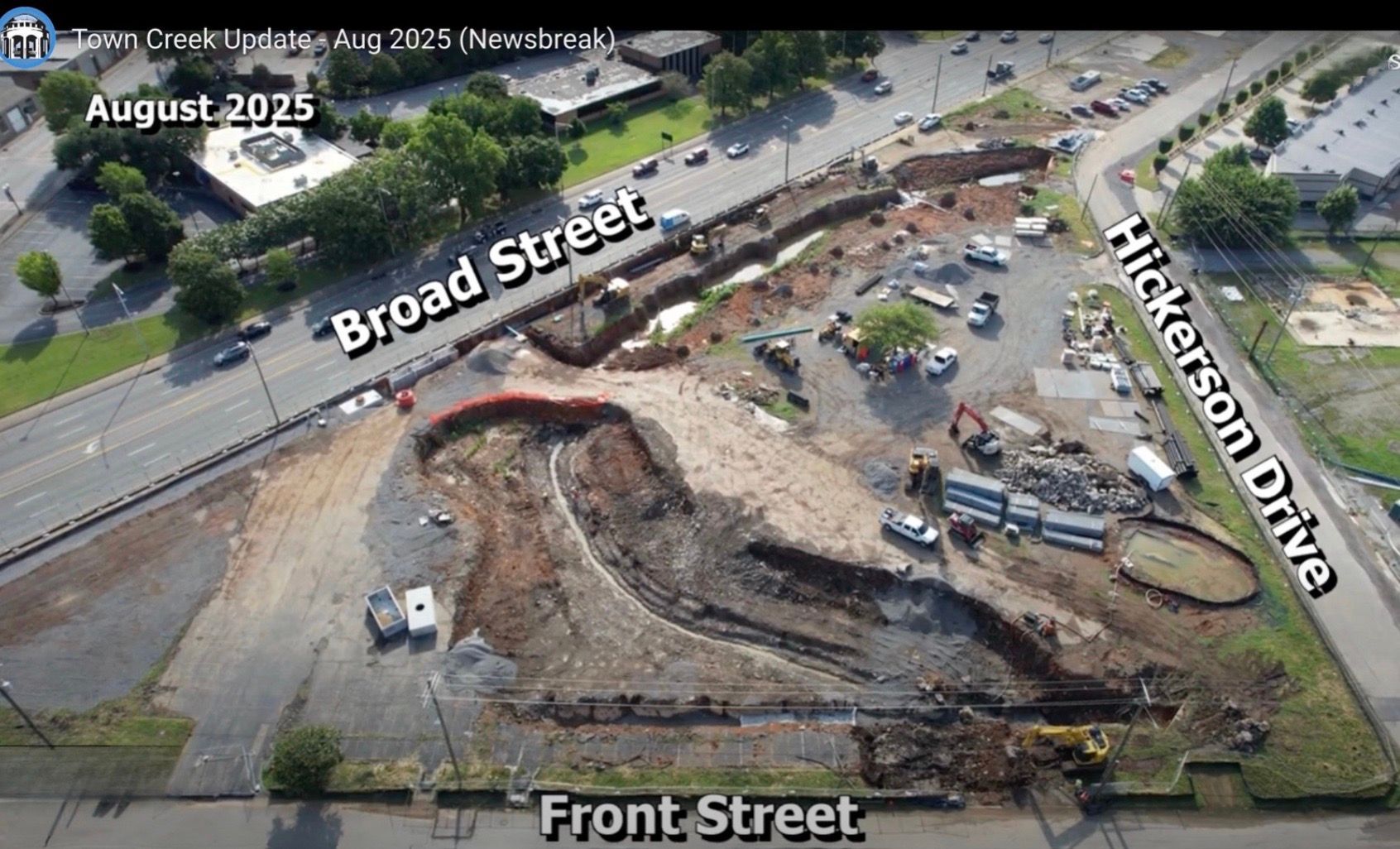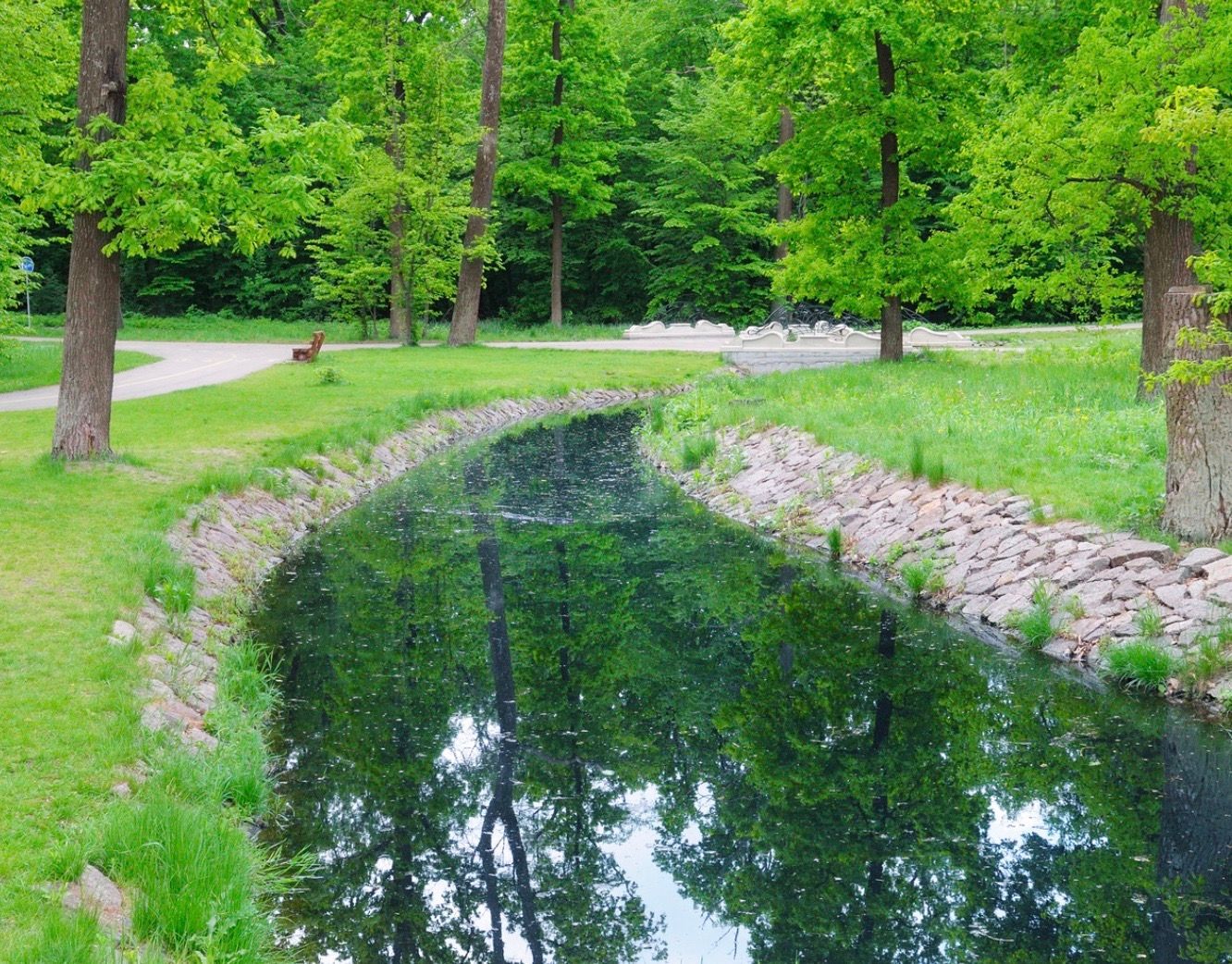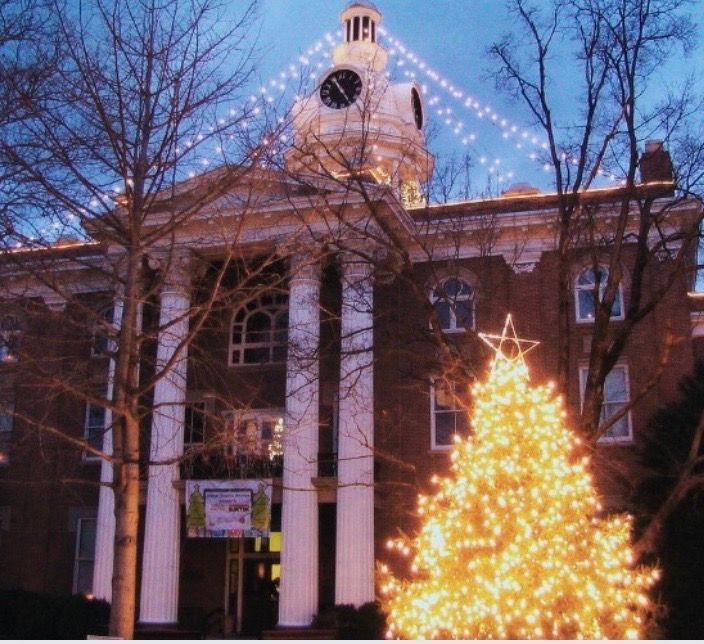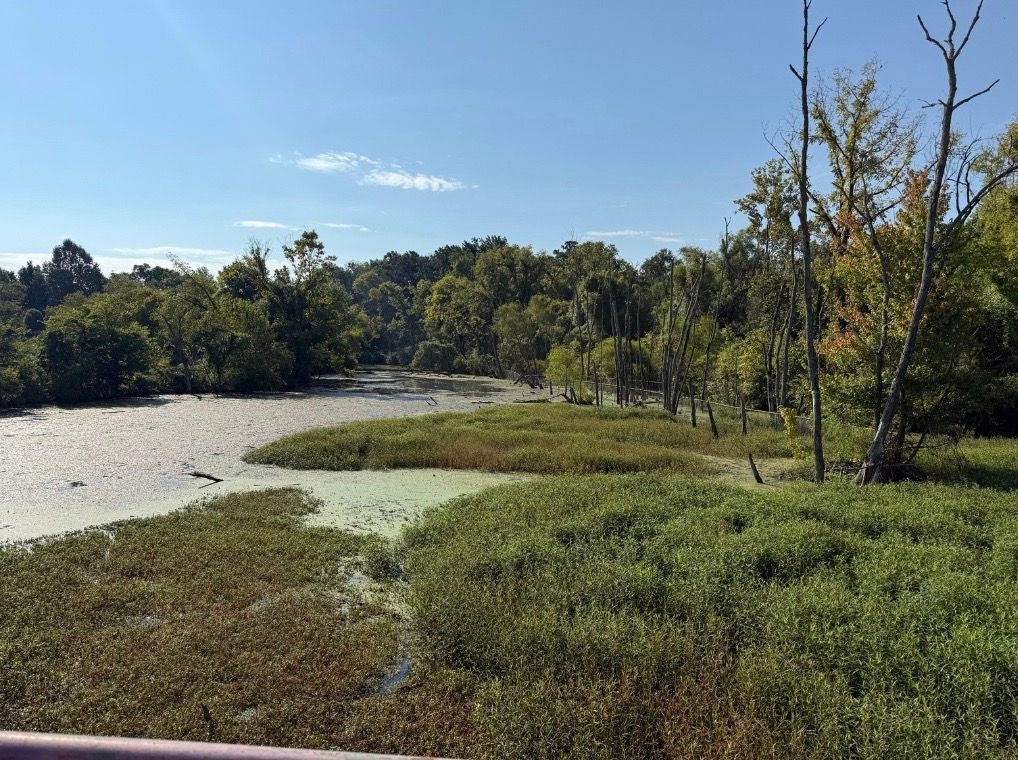Murfreesboro Commitment to Commitment and the Environment
The Historic Bottoms and Town Creek Daylighting Project

On Jan. 12, 2022, the Murfreesboro City Council voted unanimously to approve proceeding with the “daylighting” of Town Creek, an underground stream that originates in Murfree Spring at the Discovery Center. The Town Creek daylighting project is one of the most comprehensive and transformative initiatives Murfreesboro has undertaken in recent years. Town Creek and Murfree Spring hold a significant place in Murfreesboro’s history as the city's very first water sources. Originally, the spring-fed Town Creek and Murfree Spring provided clean, fresh water for early settlers and the growing community, making them a vital natural resource in the city’s formative years. However, because these sources were limited in capacity, as Murfreesboro’s population expanded, the city faced increasing demand for water. Recognizing the limitations of local sources, city officials eventually constructed a larger water treatment plant on the East Fork of Stones River near the Alvin C. York VA Medical Center, along with a supplemental raw water line from Percy Priest Lake. These developments allowed Murfreesboro to sustain its expanding population and industries by providing a more reliable and abundant supply of treated water, essential for public health and economic development.
During the mid-20th century, city leaders in Murfreesboro made the decision to enclose Town Creek in underground culverts and elevate the surrounding area primarily to address pressing urban development challenges. At that time, The Bottoms was a low-lying neighborhood that frequently experienced flooding, which created hazards for residents and limited opportunities for growth. Flooding was not only a safety concern but also impeded economic development and urban expansion.
By placing Town Creek in underground culverts, city officials aimed to control flooding more effectively, protect property, and facilitate infrastructure projects, especially the construction of Broad Street, which was part of the city’s broader efforts to modernize and expand the downtown area. Elevating the land and covering the creek were seen as practical solutions that would allow the city to develop commercial corridors, improve transportation routes, and attract new businesses and residents. Officials believed that these changes would revitalize the area by creating a more reliable flood-control system and encouraging economic growth, ultimately helping Murfreesboro become a more thriving and modern city. However, while these measures succeeded in managing flooding and spurring development, they also resulted in the loss of the natural creek and the historic character of The Bottoms.
Today, the aging infrastructure not only poses a risk of flooding but also incurs substantial maintenance costs for the city. Recognizing these issues, Murfreesboro officials devised a plan to restore the natural flow of Town Creek through a process called “daylighting.” This approach involves removing the underground culverts and returning the stream to its original above-ground, scenic, and environmentally healthy condition. The project includes constructing a linear park along North Broad Street from Murfree Spring to Cannonsburgh Village, with walking and biking trails, plazas, and a new pedestrian bridge over Broad Street to connect downtown with the Historic Bottoms. By restoring the creek to its natural state, the city aims to reduce flood risks, improve water quality, and enhance the aesthetic appeal of the downtown area.
The project is phased, the first phase included utility improvements and clearing space for the new stream. The second phase involved property acquisitions along Broad Street. By restoring Town Creek, Murfreesboro will not only preserve its rich history but also significantly enhance its environmental resilience and community livability. The daylighting effort will help manage stormwater, reduce flooding, and inspire neighborhood redevelopment. It will turn a once-hidden waterway into a scenic, accessible feature that connects downtown with green spaces like Murfree Spring and Cannonsburgh Village, encouraging outdoor recreation, supporting local businesses, and attracting visitors.
Murfreesboro’s ongoing commitment to transforming its downtown into a vibrant, environmentally friendly, and community-focused area makes it an even more attractive place for families, professionals, and visitors alike. With these changes on the horizon, Murfreesboro continues to evolve as a dynamic and welcoming city. The entire project is expected to be completed by late 2026, with final trails, parks, and pedestrian connections opening to the public.
Once completed, the new Town Creek linear park and revitalized area will offer residents and visitors a wonderful space to enjoy outdoor activities such as walking, biking, picnicking, and relaxing amidst nature. The scenic trails will provide a safe environment for daily exercise, while open spaces will host community events like festivals, markets, and gatherings, fostering a stronger sense of community. People can connect with nature, observe wildlife, and take in picturesque views, all while creating opportunities for education, socializing, and neighbors to come together. More than just a park, this project is an investment in Murfreesboro’s future, improving flood management, supporting local ecosystems, and boosting economic growth. By restoring a historic waterway and revitalizing the downtown area, we honor our city’s rich history while embracing a sustainable and vibrant future. We should all feel good about this project because it makes our city more beautiful, sustainable, and provides a safe, vibrant space for everyone to enjoy now and for generations to come.
***
The historic neighborhood known as "The Bottoms" in Murfreesboro was a vibrant, tight-knit community that developed rapidly after the Civil War, primarily inhabited by African Americans and low-income families. Situated south of the Public Square, it was characterized by its low-lying terrain, which made it especially vulnerable to flooding from Town Creekan issue that shaped many aspects of life there. The residents built homes from scrap materials, often in makeshift shacks, and faced severe hardships including a lack of basic amenities like running water, indoor toilets, and properly paved roads. Despite these challenges, the community was known for its resilience, resourcefulness, and strong sense of togetherness, with families relying on one another for support amidst the hardships of poverty and frequent flooding. During the mid-20th century, the area underwent significant change due to urban renewal initiatives. The construction of Broad Street sliced through the neighborhood, displacing many families and demolishing homes and small businesses, including homes along Simmons Alley (now the East Sevier Street area) , which was once a close-knit enclave adjacent to the city cemetery. The redevelopment efforts aimed to modernize the city but resulted in the loss of much of the neighborhood's original fabric and history. Today, local organizations and city planners are working to preserve the legacy of The Bottoms by recognizing its importance in Murfreesboro’s history and integrating its story into ongoing development projects. These efforts include the work to daylight Town Creek, restoring the natural stream that was culverted to prevent flooding, which will help reconnect the area to its historical roots while promoting neighborhood revitalization, environmental sustainability, and future growth. The history of The Bottoms serves as a reminder of the resilience of the community that once thrived there and highlights the importance of honoring and preserving such stories amid ongoing progress.






